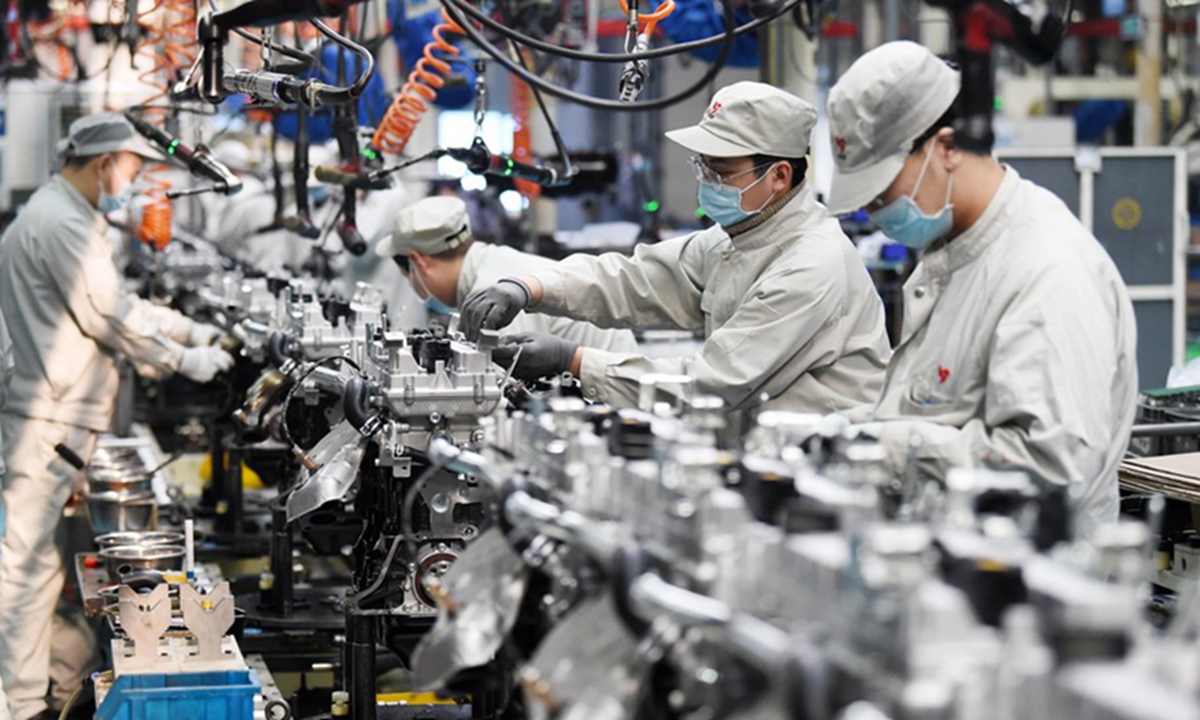
Photo: Xinhua
Almost seven years after the US initiated the trade war against China, China's trade surplus approached $1 trillion in 2024.
Given the signs about China's new trade data, Washington's strategic decision-makers should recognize the diminishing effectiveness of their repeated "attacks" on Chinese manufacturing and their efforts to restructure their supply chains.
Let me use a rice cooker to explain this issue.
Twenty years ago, a Chinese rice cooker cost about $20 to $30. The quality was average, and the functions were quite limited. It cooked rice pretty well, though the rice might be a bit hard, or there might be a layer of burnt rice at the bottom. But, because it was cheap, American consumers didn't mind.
Over time, Chinese-made rice cookers started to evolve. Now, if you go to Walmart or Amazon, you'll find that Chinese rice cookers not only remain affordable (around $50 to $100), but their functions have become increasingly diversified: intelligent temperature control, programmable timers and aroma settings for different types of rice. More importantly, their quality has completely caught up with that of high-end foreign brands.
In recent years, the market share of Chinese rice cookers in the US has continued to grow. Data showed that the export volume of Chinese rice cookers in 2023 reached 57 million units, with the US being one of the leading single-market export destinations.
What lies behind this? It shows the upgrading of Chinese manufacturing. Chinese factories not only boast significant scale advantages but are also continuously investing in technological research and development. Some Chinese rice cookers now use self-developed induction heating technology, resulting in cooking distinct and fragrant rice.
These rice cookers, designed to cater to the specific needs of US consumers, are a prime example of the adaptability of Chinese manufacturers. This ability to "customize for the market" reassures consumers and positions Chinese manufacturing at the forefront of consumer trends.
The development of the rice cooker is just a microcosm of Chinese manufacturing.
China's export data reveals a significant trend. While the country's exports were once dominated by low-value-added products, such as clothing and toys, a shift is underway. China is now exporting more high-value-added items, a sign of the industry's long-term evolution.
Manufactured goods account for as much as 98.9 percent of China's exports. Their variety and quality are undergoing qualitative changes. For example, Chinese electric vehicles have become popular in many countries. Additionally, everything from smartphones to household and high-end appliances are capturing an increasingly large share of the global market.
A prominent feature of Chinese manufacturing lies in its relentless pursuit of functionality innovation, leading design and user experience trends. This shift from "meeting demand" to "creating demand" reflects how Chinese manufacturing leads the market. This capability is challenging for other countries to replicate because it requires not only technology and scale but also a deep understanding of the market and a quick response to consumer demands.
In the past two to three years, Washington has been pushing some domestic companies to try to reduce their dependence on Chinese manufacturing by restructuring their supply chains, such as moving production to Vietnam, India or Mexico.
However, if decision-makers in Washington's offices could pay a visit to those countries, they would find that the main components and machinery used to produce end products for the American market are still heavily reliant on Chinese manufacturing. These countries cannot meet the scale, cost and quality requirements.
Chinese manufacturing's capability has not been established overnight. It has been formed through decades of accumulation and development, and is an ever-evolving and upgrading industrial ecosystem. No matter how hard the US tries to reconstruct its supply chains, it will not find an alternative that meets the demands of scale, cost, quality and innovation capability. Any blow to Chinese manufacturing will ultimately suppress global market demand, including the demand of American consumers.
Lastly, I suggest Washington's decision-makers use a China-made rice cooker, and this experience might help them gain a full understanding of the reality of the situation.
The author is a senior editor with People's Daily, and currently a senior fellow with the Chongyang Institute for Financial Studies at Renmin University of China. dinggang@globaltimes.com.cn. Follow him on X @dinggangchina




